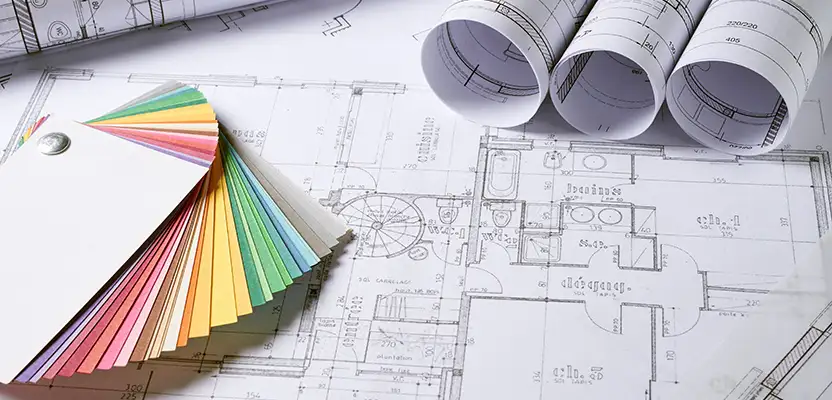Architect Salary Report by City and Experience
Wiki Article
Comprehending the Diverse Career Paths Available for Aspiring Architect
As an ambitious Architect, you have a world of job paths waiting for you. Whether you're drawn to standard architecture or the nuances of lasting design, there's a specific niche that straightens with your interests.Conventional Design: Creating Buildings and Structures
Conventional design focuses on creating structures and frameworks that mix functionality with aesthetic appeal. Your designs can reflect cultural heritage, showcasing neighborhood practices while fulfilling modern-day requirements.You'll create abilities in composing, model-making, and website evaluation, allowing you to imagine and communicate your ideas efficiently. Engaging with customers, you'll need to understand their vision and translate it into feasible styles.
Furthermore, developing codes and sustainability practices are important in your work, guaranteeing your structures are ecologically friendly and risk-free. As you grow in your career, you'll locate possibilities in property, business, and even reconstruction projects, each offering distinct difficulties. Embracing conventional style leads the way for a satisfying job that admires the past while shaping the future.
Urban Planning: Shaping Neighborhoods and Public Spaces
As an ambitious Architect, you can play an important function as a metropolitan coordinator, transforming how areas communicate and function. By employing area engagement strategies, you'll ensure that homeowners have a voice in forming their setting. Plus, incorporating lasting style principles will certainly aid create spaces that not only meet today's needs yet additionally safeguard the future.Duty of Urban Planners
While several might believe of engineers as the sole enthusiasts behind buildings, metropolitan organizers play a necessary role in shaping the more comprehensive landscape of areas and public rooms. By teaming up with numerous stakeholders, you'll aid develop parks, transportation systems, and household locations that promote social communication and ease of access. Your know-how in spatial layout and area dynamics enables you to picture future growth while protecting social heritage.Neighborhood Interaction Approaches
Effective community involvement methods are essential for metropolitan organizers to ensure that the voices of locals are listened to and valued in the planning procedure. To cultivate meaningful dialogue, you must prioritize open discussion forums and workshops where community members can express their ideas and issues. By actively incorporating and listening feedback, you'll produce areas that reflect the community's requirements, eventually leading to more sustainable and successful metropolitan atmospheres.Sustainable Design Principles
When developing metropolitan areas, integrating lasting design principles is critical for creating environments that prosper both environmentally and socially. You need to start by concentrating on energy efficiency, making use of products that decrease waste and advertise recycling. Think about integrating eco-friendly areas, like yards and parks, to boost biodiversity and boost air top quality. Promoting walkability and public transportation can decrease reliance on cars, promoting a healthier community.Creating with water preservation in mind is also key-- believe concerning rain gardens and permeable surface areas to take care of stormwater. Including community members during the preparation process assurances that the areas you produce fulfill their demands and motivate social communication. By embracing these principles, you'll add to lively, sustainable city landscapes that benefit every person.

Landscape Design: Producing Sustainable Outside Environments
As you check out landscape architecture, you'll find essential style principles that create gorgeous and functional outside areas. Lasting methods play an important function in guaranteeing these settings grow while lessening environmental effect. And also, you'll locate a variety of profession chances that permit you to make a real difference in how people communicate with nature.Design Principles in Landscape
Understanding layout principles in landscape style is crucial for producing sustainable outside environments that balance with nature. You'll require to contemplate aspects like range, balance, and percentage to assure your designs feel natural and inviting. Including indigenous plants not only boosts biodiversity however additionally decreases water use, making your landscape durable. Think of the flow of room and just how people engage with it; paths and seating locations ought to invite expedition and leisure. Furthermore, focus on seasonal changes, creating with products that complement the surroundings year-round (Architect). By focusing on sustainability and looks, you can develop outdoor spaces that enrich the neighborhood and advertise health. Embracing these principles will set a strong foundation for your profession in landscape style.Lasting Practices Review
Sustainable practices in landscape architecture not only concentrate on looks yet additionally prioritize eco-friendly wellness and source conservation. You can develop rooms that promote dirt health and wellness, such as using natural materials and exercising permaculture concepts. Ultimately, these practices assure your layouts profit both people and the setting for years to come.Profession Opportunities Exploration
With a solid foundation in lasting methods, landscape architecture provides a variety of career courses that enable you to make a purposeful influence on the atmosphere. Urban planners often team up with landscape designers to create environment-friendly areas in urban setups, improving city livability. If you're enthusiastic regarding education and learning, think about becoming a landscape style teacher, motivating future generations.Lasting Style: Concentrating On Eco-Friendly Practices
As you discover your profession in style, accepting environment-friendly techniques can set you apart in a competitive area. Sustainable layout concentrates on developing structures that minimize ecological influence while improving owner wellness. By including sustainable products, energy-efficient systems, and sustainable structure strategies, you'll contribute to a greener future.Begin by gaining understanding of green accreditations like LEED or BREEAM, which can strengthen your credentials. Think about just how natural light, air flow, and thermal performance can optimize style. Work together with designers and ecological consultants to introduce solutions that reduce waste and preserve resources.
Don't forget the importance of neighborhood involvement-- appealing neighborhood stakeholders can motivate designs that harmonize with the environment. As clients progressively focus on sustainability, your competence in eco-friendly practices will not just draw in jobs yet likewise satisfy your interest for responsible design. Embrace this critical element of the career, and see your profession prosper.
Historical Preservation: Shielding and Restoring Cultural Heritage
While you start on your building trip, think more info about the crucial role of historical preservation in keeping our social heritage. This field concentrates on the protection and reconstruction of considerable buildings, sites, and structures that inform the stories of our past. By taking part in historical preservation, you'll aid secure the architectural tradition that shapes area identification.As a historic preservation Architect, you'll evaluate historical value and evaluate the condition of frameworks. You'll work very closely with chroniclers and conservationists to guarantee genuine restoration methods are used. This job path enables you to blend creative thinking with research study, enabling you to make options that respect initial materials and workmanship.
Your work not just adds to sustainability by recycling existing buildings but additionally promotes a feeling of pride within areas. Embracing this course will assist you become a guardian check here of background, preserving the stories and aesthetic appeals that improve our lives.
Inside Design: Enhancing Indoor Spaces
Historical conservation and interior design both share a dedication to enhancing the developed environment, however they concentrate on various aspects. While historical preservation highlights keeping a framework's historic and social worth, interior design absolutely nos in on optimizing indoor areas for capability and aesthetic appeals.As an ambitious Architect, you'll find that interior design permits you to mix creative thinking with technological abilities. You'll make spaces that not only look great however also promote comfort and effectiveness. This area entails recognizing exactly how light, color, and materials engage within an area, influencing state of mind and use.
You'll work with different jobs, from household homes to business workplaces, making certain that each setting satisfies the demands of its owners. By focusing on customer experience, you can change insides right into motivating and useful areas, making a substantial influence on just how people engage with their environments. Accept the chance to enhance interior settings and form the means people live and function.
Industrial Style: Merging Functionality With Appearances
Commercial design plays a vital role in creating products that perfectly blend aesthetics with capability, making certain that what you make use of everyday is not only aesthetically enticing however also sensible. As a hopeful Architect, you could immerse on your own in this field, concentrating on creating whatever from furnishings to customer electronics. Your job includes understanding customer needs, products, and producing processes, enabling you to create cutting-edge services that boost daily experiences.In commercial layout, you'll frequently team up with makers, engineers, and marketing professionals, making sure that your styles are not just gorgeous yet additionally possible. You'll find out to balance kind and function, focusing on usability without giving up style. By honing your skills in laying out, 3D modeling, and prototyping, you'll be well-equipped to bring your ideas to life. This occupation course offers a dynamic atmosphere where creative thinking fulfills practicality, making it a gratifying option for engineers curious about shaping the products of tomorrow.
Regularly Asked Concerns
What Educational Accreditations Do I Need to Become an Engineer?
To come to be a designer, you'll need a professional level in design, generally a Bachelor's or Master's. Additionally, you'll have to complete an internship and pass the Architect Registration Examination to practice legally.Exist Certification Needs for Various Architectural Occupation Paths?
Yes, there're certification needs for numerous building courses. Architect. You'll need to pass tests, full internships, and sometimes go after specialized training, depending on your picked focus, like landscape style, urban design, or historical preservationWhat Software Abilities Are Important for Engineers Today?

How Can I Gain Practical Experience While Studying Style?
You can get useful experience by interning at building firms, taking part in layout competitors, volunteering for neighborhood projects, or teaming up with classmates on real-world assignments. These possibilities enhance your abilities and develop beneficial connections in the sector.What Task Opportunities Exist Outside Typical Style Firms?
You can explore numerous job chances outside traditional architecture companies, like urban preparation, indoor style, landscape style, building monitoring, real estate advancement, or perhaps duties in sustainability consulting. Each offers special obstacles and rewards.Whether you're drawn to typical architecture or the subtleties of lasting design, there's a specific niche that Architect straightens with your interests.When creating urban spaces, integrating lasting layout principles is vital for developing environments that grow both environmentally and socially.As you explore landscape design, you'll find crucial design principles that develop stunning and useful outdoor spaces.Understanding design concepts in landscape architecture is vital for producing lasting outside atmospheres that integrate with nature.In commercial layout, you'll frequently collaborate with designers, suppliers, and marketers, making certain that your layouts are not just lovely however additionally viable.
Report this wiki page